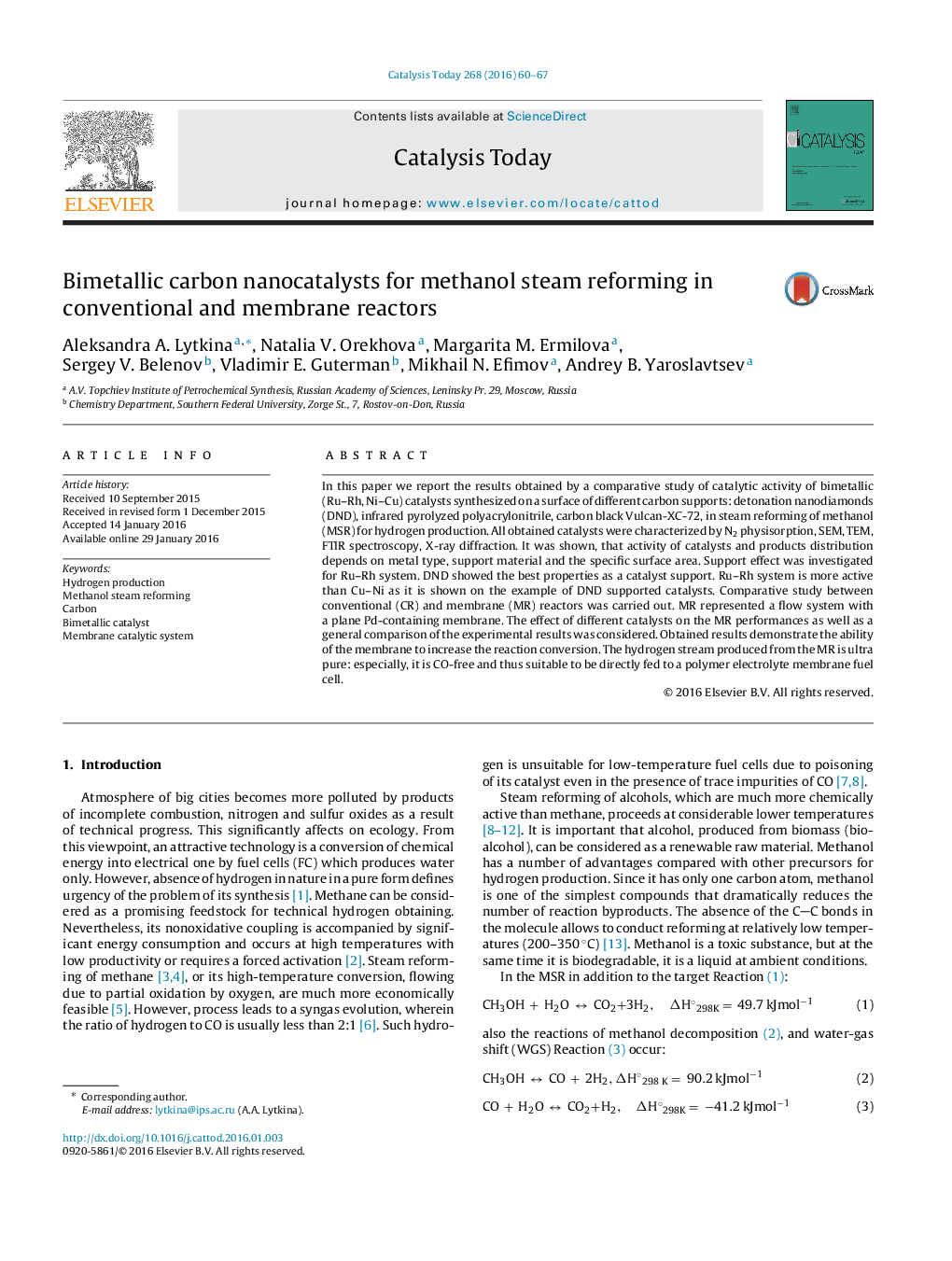| کد مقاله | کد نشریه | سال انتشار | مقاله انگلیسی | نسخه تمام متن |
|---|---|---|---|---|
| 53336 | 46963 | 2016 | 8 صفحه PDF | دانلود رایگان |
• Metal/C systems were used as catalysts in MSR in membrane and conventional reactors.
• DND-based catalyst has the best hydrogen performance.
• Ru–Rh/DND catalyst gives more hydrogen productivity than Ni–Cu/DND catalyst.
• In MR obtained hydrogen yield was 20% higher than in the CR.
• The hydrogen stream, obtaining in permeate zone of the MR, is ultra pure
In this paper we report the results obtained by a comparative study of catalytic activity of bimetallic (Ru–Rh, Ni–Cu) catalysts synthesized on a surface of different carbon supports: detonation nanodiamonds (DND), infrared pyrolyzed polyacrylonitrile, carbon black Vulcan-XC-72, in steam reforming of methanol (MSR) for hydrogen production. All obtained catalysts were characterized by N2 physisorption, SEM, TEM, FTIR spectroscopy, X-ray diffraction. It was shown, that activity of catalysts and products distribution depends on metal type, support material and the specific surface area. Support effect was investigated for Ru–Rh system. DND showed the best properties as a catalyst support. Ru–Rh system is more active than Cu–Ni as it is shown on the example of DND supported catalysts. Comparative study between conventional (CR) and membrane (MR) reactors was carried out. MR represented a flow system with a plane Pd-containing membrane. The effect of different catalysts on the MR performances as well as a general comparison of the experimental results was considered. Obtained results demonstrate the ability of the membrane to increase the reaction conversion. The hydrogen stream produced from the MR is ultra pure: especially, it is CO-free and thus suitable to be directly fed to a polymer electrolyte membrane fuel cell.
Figure optionsDownload high-quality image (152 K)Download as PowerPoint slide
Journal: Catalysis Today - Volume 268, 15 June 2016, Pages 60–67
